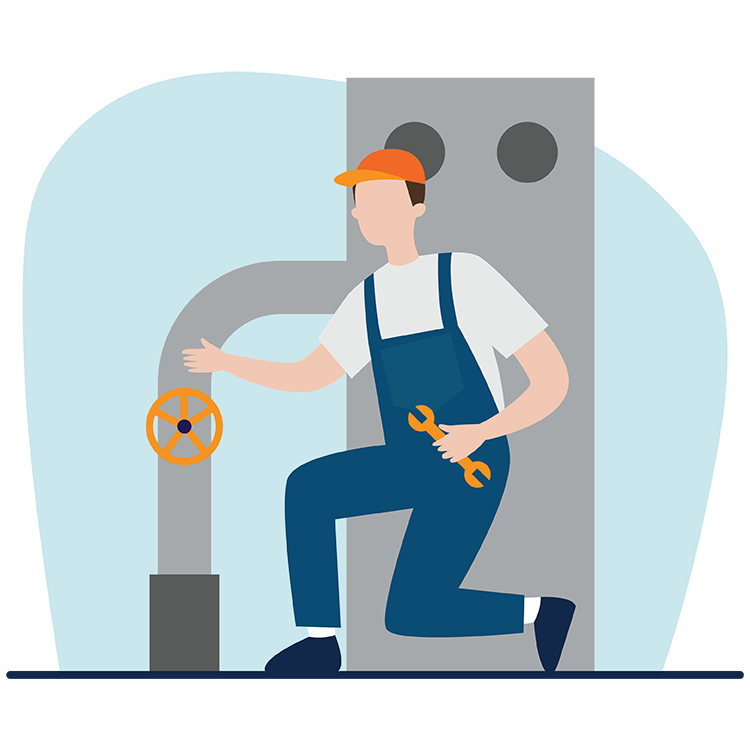Premier Plumber Alabaster AL Ready to Serve You Anytime
Wiki Article
A Detailed Guide to Reliable Water Heater Installation for Optimal Efficiency
Starting the task of installing a hot water heater is an endeavor that demands accuracy and an organized method for achieving optimum performance. The procedure starts with the critical choice of choosing the appropriate heating system tailored to the details requirements of your household, taking into consideration aspects such as energy, kind, and dimension resource. Once selected, preparing the setup location to fulfill security criteria is extremely important. However, the trip doesn't finish right here. As you proceed, the ins and outs of attaching water supply lines and establishing reliable electrical or gas links await, appealing understandings into making certain efficiency and dependability.Picking the Right Water Heating Unit

Next, consider the size and capability of the hot water heater. It's essential to assess your home's warm water requirements, which can differ based upon the variety of owners and their usage patterns. An unit that's too small may result in inadequate warm water, while a large design may lead to unneeded power usage.
Effectiveness scores likewise play a crucial duty in option. Try to find hot water heater with high Power Factor (EF) ratings, indicating exceptional performance and reduced energy use. Tankless versions, though typically more pricey ahead of time, offer considerable energy savings over time due to their on-demand heating capabilities.
Preparing the Installation Area
Prior to installing a brand-new water heater, careful preparation of the installment area is essential. It's vital to measure the area carefully to fit the water heating system's dimensions, making sure adequate clearance around the unit for effective procedure and maintenance.Check the floor for security, as the water heater will need a solid, level surface area to run properly. If essential, mount a drip frying pan underneath the system to capture possible leakages or spills, avoiding water damage to the surrounding area.
In addition, ensure that all needed tools and materials get on hand prior to beginning the setup. This includes items such as wrenches, screwdrivers, a degree, and any type of extra hardware needed for securing the heating system and installing. A well-prepared installation location sets the foundation for a successful hot water heater configuration, maximizing performance and safety and security.
Connecting Water Supply Lines
When connecting water system lines to your recently installed hot water heater, it is vital to ensure that all links are secure and leak-free to maintain efficient procedure and stop water damage. Begin by recognizing the hot and cold water system lines. The cool water inlet is commonly marked with a blue tag or a "C", while the hot water electrical outlet is marked with a red tag or an "H".Use versatile water heater adapters to help with a less complicated setup process. These ports can soak up vibration and permit small activity, reducing the danger of leakages. Before connecting the connectors, put a plumbing technician's tape around the threaded ends of the hot water heater's inlet and outlet pipelines - Plumbing Alabaster AL. This tape functions as a sealant, stopping leakages. Carefully link the versatile tubes to the particular inlet and electrical outlet, ensuring that they are tight however not over-tightened, which could damage the threads.
Once connections remain in area, gradually switch on the main supply of water shutoff. Check each link for leakages by visually really feeling and checking for moisture. Tighten up links as essential, and ensure the stress safety valve is properly installed, protecting versus excessive stress accumulation.
Establishing Up Electrical or Gas Connections
Appropriately setting up the electric or gas connections for your water heating system is a vital action to make sure effective and safe procedure. For electrical water heating units, begin by validating that the electrical circuit is suitable with the heating unit's voltage and amperage needs.For gas water heating systems, security is extremely important. Connect the gas line to the water visit this web-site heater using a versatile gas port, ensuring it is correctly threaded and sealed with pipe joint substance or Teflon tape appropriate for gas connections.
As soon as links are made, check for any type of possible leaks. For his comment is here gas lines, apply a soapy water solution to the joints; bubbles show a leak. For electric links, confirm that all circuitry is secure and correctly protected, preserving conformity with neighborhood electric codes.
Adjusting and testing for Efficiency
With the electrical and gas links firmly in location, the next step is reviewing the functional effectiveness of your water heater. Begin by very carefully transforming on the water supply and guaranteeing there are no leaks at any of the joints or shutoffs.Next, execute an extensive evaluation to ensure the burner or gas burners are functioning correctly. For electric heating systems, use a multimeter to verify if the components are drawing the ideal present. In gas models, observe the heater flame; it needs to be steady and blue, indicating efficient combustion.
Adjust the settings as required to eliminate inadequacies. Consider applying insulation steps, such as including a water heating unit blanket, to further boost performance by lessening heat loss. Furthermore, check the anode rod's problem, as a scrubby pole can reduce effectiveness and lead to storage tank corrosion.
Final Thought
Efficient water heating unit setup is vital for ensuring optimal efficiency and power financial savings. Firmly attaching water supply lines and carefully establishing up electrical or gas connections reduce potential issues.
Appropriately establishing up the electric or gas connections for your water heating system is an important action to make certain efficient and safe operation. For electric water heaters, start by verifying that the electric circuit is suitable with the heating system's voltage and amperage needs. Attach the gas line to the water heating system utilizing a versatile gas port, ensuring it is correctly threaded and sealed with pipe joint compound or Teflon tape suitable for gas links.
Report this wiki page